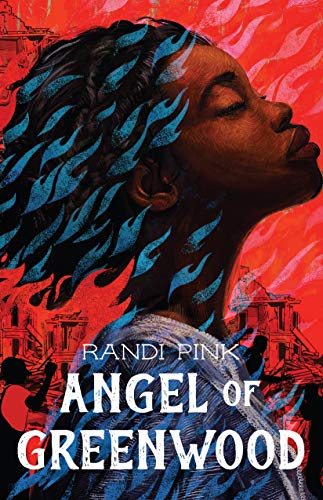Angel of Greenwood
Angel Hill and Isaiah Wilson have grown up in the Greenwood neighborhood of Tulsa, Oklahoma, the prosperous Black community known until summer 1921 as “Black Wall Street.” They are proud to live in this place of love and achievement built by Black hands. Even so, it isn’t paradise. Politics—particularly between the gradualist strategy of Booker T. Washington and the more radical, society-changing vision of W.E.B. Du Bois—have divided friends and family. Angel supports Washington’s strategy, and to Isaiah, she’s a goody-goody, an easy target for his best friend, Muggy. To Angel, Isaiah is trouble because of his support of Du Bois and his longtime role as Muggy’s sidekick. A project to deliver books to children of Greenwood who still live in poverty brings the two together, but their bond and dreams are tested when the white residents of Tulsa loot and burn, “stealing the work of Greenwood’s hands.”
For those who know the history, the story is tinged with grief; we know what was lost in the hours from May 31 to June 2. But our characters do not. Most of this novel celebrates their love as well as finding their place in the community. Isaiah wants the people to see him as more than Muggy’s best friend, as a poet with pride in his home and big dreams of his own. Angel wants to break out from the limits of her strict churchgoing life, not just through dance but also through these strange new feelings for Isaiah. Their family struggles—Isaiah’s father was killed in World War I and Angel’s father is dying of a mysterious illness—create a compelling personal story within the larger forces that will change their lives.










